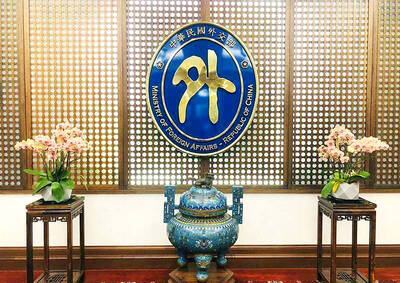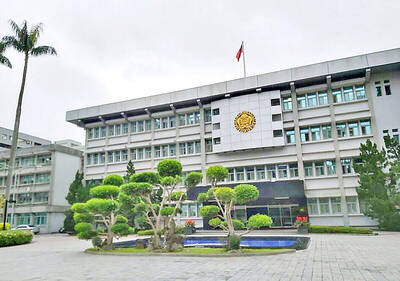The military balance between China and Taiwan has shifted in China’s favor in recent years.
Following is a brief comparison between the military forces of China and Taiwan:
ARMY
China
Personnel:1.25 million
Tanks: 7,000
Artillery pieces: 8,000
Taiwan
Personnel:130,000
Tanks:1,100
Artillery pieces:1,600
China’s 2.3 million-strong armed forces — if all its branches are included — are far bigger than the world’s second-largest military, that of the US, whose forces number about 1.5 million. The People’s Liberation Army (PLA) was born out of the Red Army, a 5 million-strong peasant army, that swept the Communists to power in 1949.
Soviet expertise helped organize it into a mass army geared toward wars of attrition during the 1950s, when it fought in the 1950-1953 Korean War alongside North Korea. The PLA is morphing into a modern force capable of fighting short, high-intensity conflicts against high-tech adversaries.
The Pentagon estimates China has about 400,000 troops in the provinces directly facing Taiwan and about 3,000 tanks.
>> With US military aid, Taiwan transformed its army from the defeated remnants of the Nationalist forces that fled to Taiwan in 1949 into a modern, disciplined military that has recently downsized in favor of improved technology. Its primary role is countering any sea or air assault from China.
AIR FORCE
China
Fighters:1,680
Bombers/attack: 620
Taiwan
Fighters:388
Bombers/attack: 22
China used to rely on somewhat substandard copies of Soviet-made aircraft, but it has recently developed a more formidable design capacity. Its most advanced aircraft are Russian Su-30 and Su-27 fighters. China is also developing stealth fighters.
The figures above include land-based aircraft, which are technically part of China’s navy. Its one aircraft carrier has only just completed its first sea trial, but the navy plans to ultimately get more and operate fighters from them.
>> The backbone of Taiwan’s air force is made up of US-made F-16A/Bs, French-built Mirage 2000s and “Ching-kuo” Indigenous Defense Fighters. Taiwan has asked the US for an additional 66 F-16C/Ds, a more advanced version of what it already operates.
>> Training is the air force’s strong suit, but experts say that a well-planned early Chinese missile strike could take out most Taiwanese air base runways and render the nation’s aircraft, hidden in fortified or mountain bunkers, trapped on the ground or unable to return to base.
NAVY
China
Destroyers: 26
Frigates: 53
Submarines: 54
Taiwan
Destroyers: 4
Frigates: 22
Submarines: 4
Once limited to just protecting China’s coast, the Chinese navy has developed in leaps and bounds, thanks to strong support from Chinese
President Hu Jintao (胡錦濤). Chinese warships have conducted anti-piracy missions in the sea around Somalia, giving China its first taste of “blue water” operations far from home.
China has a large and expanding submarine fleet, including at least five nuclear-powered vessels.
>> Taiwan’s navy includes four submarines, two of which date from World War II and still have some of their original brass fittings, and a small fleet of destroyers and frigates.
MISSILES
Aside from the more than 1,500 missiles China aims at Taiwan, the Chinese navy is developing Dong Feng 21D anti-ship ballistic missiles, a weapon that could be used to take out US aircraft carriers.China also has nuclear weapons.
Taiwan has older-model Patriot missiles to intercept any missiles fired in its direction, though it is getting a more advanced version, the PAC-3, and it also has domestically made Hsiung Feng surface-to-surface missiles. These could be aimed at ships or used to target nearby Chinese cities, such as Shanghai.
Taiwan abandoned a covert nuclear weapons program in the 1980s after pressure from the US.
Sources: Reuters, US Department of Defense, International Institute for Strategic Studies, globalsecurity.org, Taiwan’s Ministry of National Defense

The German city of Hamburg on Oct. 14 named a bridge “Kaohsiung-Brucke” after the Taiwanese city of Kaohsiung. The footbridge, formerly known as F566, is to the east of the Speicherstadt, the world’s largest warehouse district, and connects the Dar-es-Salaam-Platz to the Brooktorpromenade near the Port of Hamburg on the Elbe River. Timo Fischer, a Free Democratic Party member of the Hamburg-Mitte District Assembly, in May last year proposed the name change with support from members of the Social Democratic Party and the Christian Democratic Union. Kaohsiung and Hamburg in 1999 inked a sister city agreement, but despite more than a quarter-century of

The Ministry of Foreign Affairs (MOFA) yesterday expressed “grave concerns” after Singaporean Prime Minister Lawrence Wong (黃循財) reiterated the city-state’s opposition to “Taiwanese independence” during a meeting with Chinese Premier Li Qiang (李強). In Singapore on Saturday, Wong and Li discussed cross-strait developments, the Singaporean Ministry of Foreign Affairs said in a statement. “Prime Minister Wong reiterated that Singapore has a clear and consistent ‘one China’ policy and is opposed to Taiwan independence,” it said. MOFA responded that it is an objective fact and a common understanding shared by many that the Republic of China (ROC) is an independent, sovereign nation, with world-leading

Temperatures in northern Taiwan are forecast to reach as high as 30°C today, as an ongoing northeasterly seasonal wind system weakens, the Central Weather Administration (CWA) said. CWA forecaster Tseng Chao-cheng (曾昭誠) said yesterday that with the seasonal wind system weakening, warmer easterly winds would boost the temperature today. Daytime temperatures in northern Taiwan and Yilan County are expected to range from 28°C to 30°C today, up about 3°C from yesterday, Tseng said. According to the CWA, temperature highs in central and southern Taiwan could stay stable. However, the weather is expected to turn cooler starting tonight as the northeasterly wind system strengthens again

The Ministry of Justice Investigation Bureau (MJIB) has been investigating nine shell companies working with Prince Holding Group, and the Taipei District Prosecutors’ Office is seeking further prosecution of alleged criminals, a source said yesterday. The nine companies and three Taiwanese nationals were named by the US Department of the Treasury’s Office of Foreign Assets Control (OFAC) on Oct. 14 as Specially Designated Nationals as a result of a US federal court indictment. Prince Holding founder Chen Zhi (陳志) has been charged with fraud, conspiracy, money laundering and overseeing Prince Holding’s suspected forced-labor camps in Cambodia, the indictment says. Intelligence shared between Taiwan,